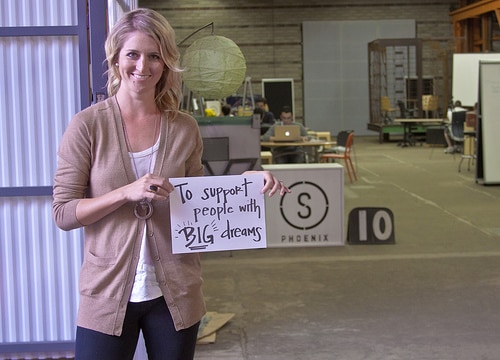By: Courtney Klein, Co-Founder & CEO of SEED SPOT
So, you founded a social enterprise. You decided to incorporate as a nonprofit. And then you realized that in starting a nonprofit you don’t own anything and you don’t control everything. What!? The law of the 501(c)3 land states that in order to take in charitable contributions and be classified as a nonprofit by the federal government, you have to have a Board of Directors, and that Board of Directors has fiduciary and legal power over the organization.
Yes, that means they can fire you, even if you are the founder!
Tell me more!?
A nonprofit board has three legal duties and 10 main responsibilities. The legal responsibilities are duty of care (actively participating in organizational planning and decision making), duty of loyalty (putting the interests of the nonprofit before their own), and duty of obedience (ensuring compliance with all federal, state, and local laws and regulations). The responsibilities include:
- Determining mission and purpose
- Selecting the Chief Executive
- Supporting and evaluating the Chief Executive
- Ensuring effective planning
- Monitoring and strengthening programs and services
- Ensuring adequate financial resources
- Protecting assets and providing proper financial oversight
- Building a competent board
- Ensuring legal and ethical integrity, and
- Enhancing the organization’s public standing
In essence, the nonprofit board exists to ensure that the mission is protected, the organization has the resources it needs to implement its mission, the Chief Executive is evaluated regularly, and no laws are broken.
It also means that board members hold a lot of responsibility if things go south. It is a lot of responsibility to be on a board, which is why board members are legally protected by carrying Directors & Officers insurance (ask your insurance agent, they will hook you up). Looking to learn more? Board Source has great resources to dig into the nitty-gritty legal duties of a nonprofit board and core responsibilities of board members. At the end of the day, the board wields significant power, so be strategic and intentional.
Dream Big
When you build your nonprofit board, think about people who can really help you move the needle. Trying to do something big in education? Contact the head of the Department of Education on your board. Doing something in the medical space? Reach out to some of the most highly accredited doctors in the world. While you may not win over your first choice, setting aspirations high will ensure you land board members that are smarter than you and can help advance your mission beyond what you can do by yourself.
Make a Wish List
Struggling to determine who should be on your board? Make a wish list. The first step in building a nonprofit board is outlining your organization’s specific needs. Unless you have an accountant and a lawyer on your staff, those are two must-have folks. Don’t have marketing, finance, real estate, program evaluation or PR experience on deck? Line up some board members who do! Board members are there to volunteer their expertise and help advance the mission of the organization.
In the early days, it can’t hurt to get super tactical in asking board members to help you. This is commonly called a “working board” made up of people who are willing to roll up their sleeves and help out. As you build out the wish list, we believe in creating a board matrix that outlines the skills, backgrounds, and other attributes that are valuable to have on the board. In our programs for social entrepreneurs, we provide a template, guidance, and training on the matrix. As the organization grows, the needs of the board will change so don’t be shy about updating that wish list and bringing new board members’ recommendations forward!
Why Diversity Matters
Considering that most nonprofits serve a wide range of constituents, your board needs to reflect the population you serve. Conversations spark in new ways when you have a mix of people in the room. You need diversity not only in gender and ethnicity, but in age, perspective, life experience, and professional skills to have rich discussions at the board level that do not result in “group think” or everyone saying “yes” all the time.
Outline and Ask
I find that lots of folks are intimidated to ask people to join their nonprofit board. First and foremost, you want to find people that are aligned to your mission and care about your work. Look first to the people who have already been invested in your work – maybe someone who attended an event, heard you speak, or sat down to have coffee with you. The next step is to outline what you want them to do, even if it’s a one-page outline of expectations that articulate board attendance requirements, fundraising expectations, and job duties you expect them to fulfill. Then ask. Literally, just ask. Finally, get them to sign a board member agreement and a conflict of interest policy (a lawyer can help draft one) that states they are committed to the organization and will avoid any conflicts of interest.
Show Me the Money
Nonprofit boards should help fundraise. Period. Whether through a personal contribution, opening a door to a potential donor, hosting an event, or making the ask themselves – board members should be part of your fundraising efforts. If you go to a major corporation or foundation and they ask you how many of your board members personally give to your organization, the answer should be 100%. Why should anyone else donate if your board does not donate? On top of that, the board has a responsibility to ensure there are adequate financial resources for the organization so finding ways to empower them as fundraisers is critical to the overall success of the organization. Guidestar has some great free resources to help you out here. Keep in mind, it is not the sole job of the board to bring in money, it is a partnership and as a leader you have to empower board members with the tools to help them raise money.
Cultural Fit
Align your board with the culture of the organization, and keep board members inspired by the big vision. It is hard enough to run a nonprofit organization – you don’t need a board that slows you down for the wrong reasons. A good board asks hard questions, challenges assumptions, and ensures that the path you are going down is one that furthers the mission and prioritizes financial stability. I love finding board members who challenge the organization to go bigger while providing critical feedback on how to do it sustainably. You want board members that support your vision for growth and help you get to the next level.
In short, figure out what big vision you are going after. Get aspirational about your wish list of potential board members, set clear expectations and ask. You never know what incredible impact a collaborative and dedicated nonprofit board can have.
Start your entrepreneurial journey today.
Related articles about SEED SPOT:
>>“5 Ways to Make Your Business Pitch Perfect”







